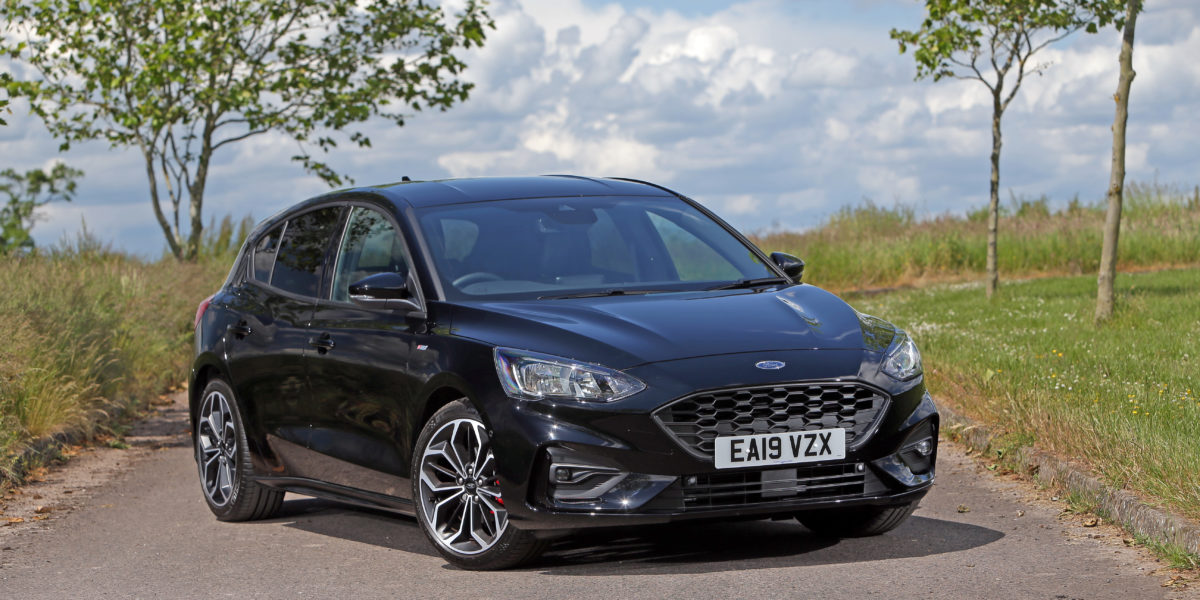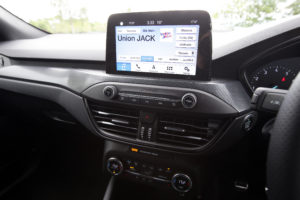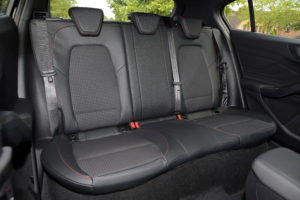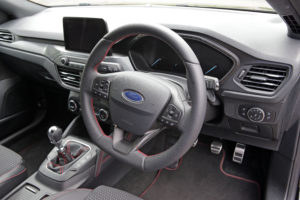
The specs
| Model tested: | Ford Focus 1.0 125 ST-Line X |
|---|---|
| Price: | £24,405 |
| Engine: | 999cc |
| Power: | 124bhp@6000rpm |
| Transmission: | 6-Speed manual |
| 0-62mph: | 10.0 seconds |
| Top speed: | 124mph |
| Economy / CO2: | 124bhp@6000rpm |
| Insurance: | 13 |
When the original Ford Focus arrived in 1998 it set a new standard for dynamic ability in the small hatchback segment, whilst remaining eminently affordable to buy and run. Adding practicality, sharp looks and great value to the mix, the Focus has quite rightly remained a best-seller over the past two decades. The fourth-generation Focus arrived in showrooms last summer and proved to be another step up, with cutting-edge safety and comfort systems. It may not look as distinctive as that first model, and it’s not quite as much fun to drive, but it’s still very impressive.
Cabin
There’s a lot to like about the Ford’s cabin, from the clear design and high-quality materials to the comfy seats and ample space front and rear. There are plenty of cubby holes, though the boot isn’t all that capacious and, unlike many rivals, it’s not split-level. The roof slopes down quite sharply at the back, but there’s still enough head and leg room for three in the back, although the sculpted seats (as is typical) means the passenger in the middle gets a raw deal.
There’s a superb infotainment system, including voice control for many functions, a do not disturb feature for the Bluetooth, and excellent sound quality. The display also incorporates a monitor for the rear parking camera, and when this is engaged an overhead view is provided, making parking that much easier.

Driving
There are 1.0 or 1.5-litre petrol engines along with 1.5 or 2.0-litre diesels, most of which come in various states of tune. Our 124bhp 1.0-litre turbocharged petrol unit is all you need, whether with the six-speed manual or eight-speed automatic transmissions. With ample torque for swift overtakes, the three-cylinder engine is incredibly smooth and flexible, willingly pulling from just over 1000rpm. At motorway speeds the Focus is impressive, refined and stable. While it feels heavier and less agile than the original did, the latest incarnation is great fun to drive with its sharp steering, slick (if slightly notchy) gear change and reasonably comfy ride (our test car rode on 18-inch alloys; things would be even better on a car with 16-inch wheels).

Costs
The Focus range kicks off with the £18,545 1.0 Ecoboost (petrol) 85 Style and is capped by the £29,995 2.0 Ecoblue (diesel) Vignale auto. Even the Style gets 16-inch alloys, automatic headlights, DAB radio and air-con, but the £20,395 1.0 125 Zetec adds a speed limiter, heated windscreen and 6.5″ touch-screen display. The 1.0 125 Titanium is perhaps the sweet spot in the range. For £22,145 you get automatic wipers, front and rear parking sensors, navigation with an 8-inch display, heated front seats, dual-zone climate control and height/lumbar adjustment for the passenger seat.
Entry-level Focuses sit in insurance group 8; a 1.0 125 Titanium is in group 15, with top-level models in group 21. The standard warranty is three years or 60,000 miles, but this can be extended to four years/80,000 miles or five years/100,000 miles. Servicing intervals are every two years or 20,000 miles for petrol models, but half this for diesels at 12 months or 10,000 miles.



